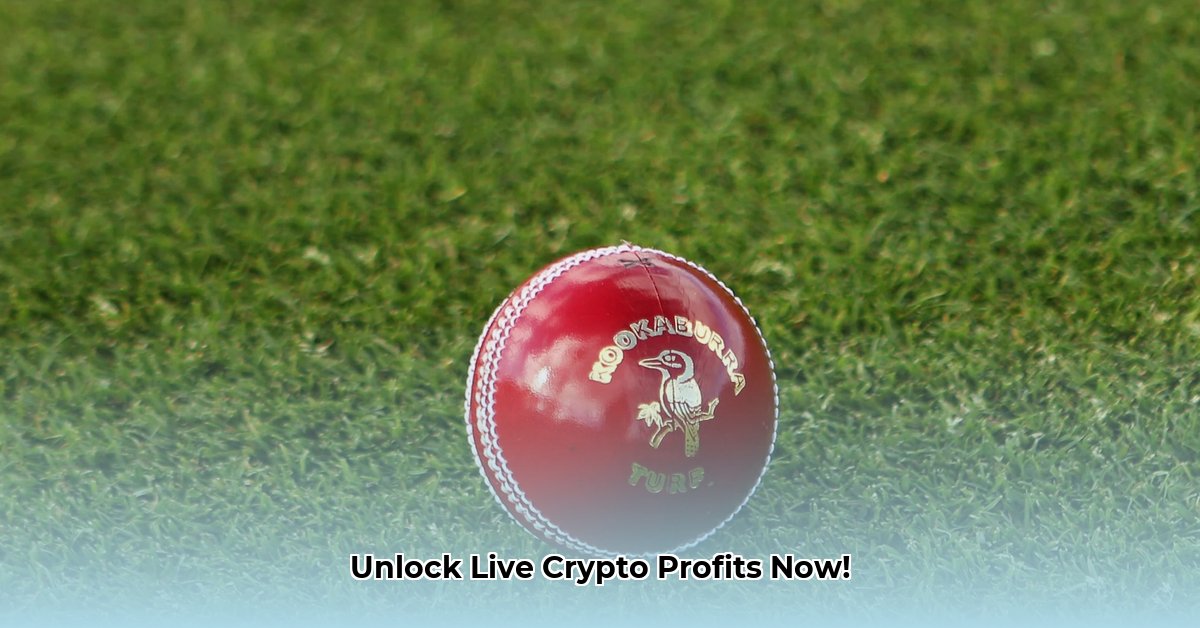So you aspire to navigate the crypto landscape proficiently and capitalize on emerging opportunities? Understanding live crypto quotes is paramount for making well-informed decisions. This guide provides a step-by-step approach to deciphering market data, demystifying numbers and charts, enabling you to discern trends and enhance your trading strategies. We’ll explore candlestick patterns, volume analysis, chart patterns, technical indicators, and risk management techniques. By the conclusion of this article, you’ll possess the confidence to interpret live crypto quotes and adeptly navigate the dynamic world of cryptocurrency trading. For a beginner’s guide, check out this helpful resource: Crypto Quotes Guide.
Live Crypto Quotes Explained: Your Guide to Profitable Trading
Ready to decode the intricacies of cryptocurrency prices and elevate your trading acumen? Let’s simplify the process. This guide will illuminate the principles of interpreting live crypto quotes and utilizing them effectively. The ability to rapidly assess market conditions allows you to analyze potential risks and rewards, a crucial aspect for any developing investor.
Understanding the Basics: Decoding the Numbers
Before delving into intricate charts and patterns, it’s crucial to solidify your comprehension of the fundamentals. A live cryptocurrency quote typically presents two primary prices: the bid and the ask. The bid denotes the highest price a buyer is prepared to pay at that moment, while the ask represents the lowest price a seller is willing to accept. The spread is the disparity between these two prices. A substantial spread often indicates reduced market liquidity, making it challenging to execute trades promptly without affecting the price; therefore it is advisable to look for more liquid markets.
Another vital piece of information is volume, which signifies the quantity of coins traded over a specified period, whether an hour, a day, or a week. High volume typically reflects heightened trading activity, potentially indicating robust market momentum and investor interest. Conversely, low volume might suggest that price fluctuations lack significance, perhaps stemming from minor adjustments or limited participation. Finally, the market capitalization reflects the total valuation of all coins currently in circulation, providing a gauge of the coin’s overall scale and market relevance. When evaluating market capitalization, consider comparing it against other cryptocurrencies to understand its relative dominance.
This vital information is readily accessible on major cryptocurrency exchanges, including platforms like Coinbase, Binance, and Kraken, where it is presented in an accessible format on each cryptocurrency’s trading page. Consider capturing screenshots for future reference as you familiarize yourself with these essential elements. Also, explore the “order book”, which displays all the current bid and ask orders for a given cryptocurrency, offering a more granular view of buy and sell interest.
Candlestick Charts: The Visual Story of Price Movements
Candlestick charts serve as visual guides through the often-turbulent realm of cryptocurrency prices. Each individual “candle” encapsulates price fluctuations within a specific time frame, such as an hour, a day, or a week. A green (or sometimes white) candle typically signifies a price increase during that period, culminating in a closing price exceeding the opening price. Conversely, a red (or occasionally black) candle implies a price decrease, with the closing price falling below the opening price, indicating selling pressure.
“Recognizing specific candlestick patterns is essential for determining market movements,” said Tariq Dennis, Financial Analyst at Forbes Advisor. These patterns, formed by the interplay of buyers and sellers, reflect sentiment and potential shifts in momentum.
The true strength of candlestick charts lies in recognizing recurring patterns that signal potential price reversals or continuations. A shooting star pattern, characterized by a short body and a long “upper wick,” might indicate an impending downward price shift due to rejection at higher prices. Conversely, a hammer candle, distinguished by a small body and a long “lower wick,” suggests potential price support and a possible upward rebound as buyers step in. Engulfing patterns, where a large candle completely “engulfs” the previous candle’s body, can serve as reliable indicators of trend alterations. Bullish engulfing patterns suggest an upward trend, while bearish engulfing patterns signal a downward trend. Doji candles, which have very small bodies, often indicate indecision in the market. By familiarizing yourself with these patterns, you’ll gain enhanced insights into potential market trajectories.
Volume Analysis: Confirmation is Key
Volume transcends simple numerical data; it serves as an indispensable component of market analysis. A substantial price surge accompanied by high volume implies robust buying pressure, thus reinforcing the likelihood of a continued upward trend. This indicates strong conviction among buyers. Conversely, a similar price increase occurring with low volume may denote a weaker market movement, potentially vulnerable to swift reversal. This suggests a lack of strong buying interest. Similarly, a notable price decline coupled with low volume could represent a short-term correction rather than the onset of a significant downward trend. It could be a temporary dip without strong selling pressure. Always contextualize volume data with other indicators. A rising price with declining volume is generally considered unsustainable.
Chart Patterns: Seeing the Bigger Picture
Going beyond individual candlesticks, chart patterns illuminate overarching trends, revealing formations such as head and shoulders, triangles, flags, or channels. These patterns provide a broader perspective that goes beyond daily fluctuations. For example, the “head and shoulders” formation, with a peak (head) and two smaller peaks (shoulders), may signal a potential peak and shift in momentum, possibly leading to a price decline. The neckline, connecting the lows between the shoulders, is a critical level to watch for a break. Conversely, “triangles,” with converging trendlines, often denote a period of consolidation prior to a price breakout in either direction. Symmetrical triangles suggest equal buying and selling pressure, while ascending triangles signal a potential upward breakout and descending triangles point to a possible downward breakout. Flags and pennants are short-term continuation patterns that signal a pause in a prevailing trend before it resumes. While these patterns serve as valuable guides, it’s crucial to recognize that no pattern can guarantee future price behavior. Market conditions and external factors can influence outcomes.
Technical Indicators: Adding Another Layer
Technical indicators are mathematical calculations based on price and volume data that provide further insights into market conditions. While numerous indicators exist, understanding a few key ones can significantly enhance your analysis.
- Moving Averages (MA): These averages smooth out short-term price volatility, offering a clearer view of underlying trends. Simple moving averages (SMAs) calculate the average closing prices over a defined period, while exponential moving averages (EMAs) assign greater weight to recent price data, making them more responsive to current price changes.
- Relative Strength Index (RSI): This momentum oscillator measures the speed and change of price movements. RSI values range from 0 to 100. An RSI above 70 typically indicates overbought conditions, suggesting a potential price reversal to the downside, while an RSI below 30 signals oversold conditions, hinting at a possible upward correction.
- Moving Average Convergence Divergence (MACD): This trend-following momentum indicator shows the relationship between two moving averages of a price. The MACD line is calculated by subtracting the 26-period EMA from the 12-period EMA. A signal line, which is a 9-period EMA of the MACD line, is also plotted. Crossovers between the MACD line and the signal line can indicate potential buying or selling opportunities.
- Bollinger Bands: These bands plot two standard deviations away from a simple moving average. They expand and contract with volatility, providing a visual representation of price ranges. Prices often revert to the mean (the moving average) after touching the upper or lower band.
Remember that indicators should supplement, not replace, your analysis of price action and volume. Avoid over-reliance on any single indicator.
Risk Management: Protecting Your Investments
Despite employing the most rigorous analysis techniques, cryptocurrency trading inherently carries risk. To safeguard your investments, it’s crucial to never allocate more capital than you can afford to lose. Implementing a robust risk management strategy is not optional but rather essential for achieving sustained trading success. Employ stop-loss orders—automated sell orders triggered when the price reaches a predetermined level—to mitigate potential losses. Place stop-loss orders at levels that align with your risk tolerance and trading strategy.
Furthermore, diversify your investment portfolio and avoid succumbing to hype or “get-rich-quick” schemes. Diversification reduces the impact of any single asset’s performance on your overall portfolio.
Putting It All Together: Your Path to Success
Proficiently interpreting live crypto quotes involves integrating diverse elements. This entails analyzing candlestick patterns, scrutinizing volume, evaluating chart formations, considering technical indicators, and diligently managing risk. While some believe combining several indicators might enhance accuracy, ongoing research continues to refine these techniques, with the certainty of any single method remaining unconfirmed.
The goal is to gauge overall market sentiment, evaluate your risk tolerance, and interpret data from both short-term and long-term vantage points. A thorough analysis reduces the sway of emotions and facilitates more informed trading decisions. Consistent practice and continuous learning are crucial for successfully decoding live crypto quotes. Backtesting your strategies on historical data can help you refine your approach.
Actionable Steps: Your Trading Roadmap
Here’s a structured approach to facilitate your trading journey:
- Master the Basics: Grasp bid, ask, spread, volume, and market cap.
- Learn Candlestick Patterns: Identify prevalent patterns and their implications.
- Incorporate Volume Analysis: Employ volume to validate price trends and pinpoint potential reversals.
- Identify Chart Patterns: Recognize chart patterns to assess long-term trends.
- Explore Indicators: Add technical indicators to bolster your analysis.
6.
- Uncover Timeless Ancient Greece Female Names: A Guide to Choosing the Perfect Name - August 9, 2025
- Explore Ancient Greece Artifacts: Unveiling Iconic Treasures - August 9, 2025
- Unveiling Ancient Greek Marriage: Customs & Laws Revealed - August 9, 2025

















7 thoughts on “Master Live Crypto Quotes Explained: Profit Now”
Comments are closed.